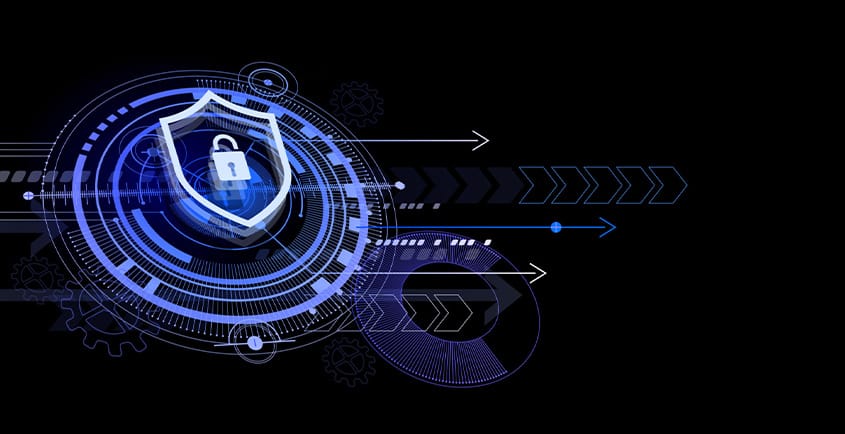The Best Ways to Prepare for the Four Big Cyber Risks in 2023

At this point, 2023 is a blank slate. While the past few years have demonstrated that it is impossible to anticipate all potential scenarios, understanding current cybersecurity challenges, including cyber risks can help you be better prepared for next year.
By being aware of potential future challenges, you can be better prepared to deal with them. This might involve creating a budget that allocates funds to important areas and hiring staff with the necessary skills to address anticipated threats. Additionally, it is important to train your staff to prevent common attacks.
Security experts have identified some of the most significant cybersecurity threats that organizations are likely to face in 2023. The following are the top four threats to be aware of and, more importantly, how to prepare for them.
1. Cyber Risks: Security by Obscurity
Large multinational enterprises and critical infrastructure organizations are well aware that they are appealing targets for cybercriminals and invest a significant amount of time and money in mitigating those risks. Smaller companies may be tempted to assume that they are not at risk because they are too small to be targeted. However, this is no longer the case. In fact, most businesses that experience cyberattacks are small to medium-sized. Ransomware attacks are now based on how much a business is willing to pay rather than the size of the organization.
Businesses that believe they won’t be hacked are much more likely to become victims of a cyberattack. When you think you are not at risk, you are less likely to allocate the necessary resources, funds, and training to safeguard your business. Every organization should assume that a cyberattack is a question of “when,” not “if,” and take steps to protect themselves accordingly, regardless of their size or perceived value to cybercriminals.
2. Cyber Risks: Supply Chain Attacks
All businesses rely on other companies for products and services, but this also means that they inherit all of the cybersecurity risks and vulnerabilities of their supply chain. While businesses can control what happens within their own infrastructure, they have no control or visibility into what is happening with their vendors. According to the IBM 2022 Cost of a Breach Report, 19% of all breaches are supply chain attacks. The average cost of a supply chain compromise was $4.46 million, slightly higher than the average cost of a breach.
Despite these challenges, there are steps that businesses can take to protect themselves. One option is to conduct a cybersecurity audit of all vendors to fully understand the risks associated with each one. When deciding to work with a vendor, consider the level of risk that your organization is willing to accept. Additionally, you can adopt a zero-trust approach to minimize the impact of a supply chain attack. By only granting vendors access to what is necessary for business purposes, you can limit the potential damage. For example, using micro-segmentation can allow vendors and their products to access only the smallest possible portion of the network. If malicious code is introduced through a software update, the damage will be contained to that small section of the infrastructure.
3. Cyber Risks: Collaboration Among Threat Actors
Instead of individual groups targeting organizations independently, cybercriminals are now working together. This means that they are sharing expertise, resources, and insider knowledge. For example, “Ransomware-as-a-Service” is now available. Groups are selling their ransomware in exchange for a percentage of the profits, providing more criminals with access to advanced hacking tools.
Cybercriminals are now leveraging the power of numbers by working together. This presents a significant challenge for organizations, highlighting the need to prioritize cybersecurity. Arrests and disbandments may temporarily disrupt these groups, but they can easily reform or pass on their knowledge to others. As these collaborations continue, threats will only become more numerous and sophisticated.
4. Reactive Network Defense
Traditionally, cybersecurity efforts focused on protecting the perimeter and responding to attacks. However, this approach is no longer effective due to the proliferation of hybrid and remote work, which means that there is no longer a clear perimeter to defend. Additionally, the increasing number and complexity of attacks make it virtually impossible to prevent all threats. Organizations that are still using a reactive approach are likely to struggle.
Transitioning from a reactive to a proactive approach requires significant changes to mindset and infrastructure, but it has many benefits. By adopting a proactive approach, organizations can prevent many attacks from happening in the first place. Using a zero-trust approach, it is possible to prevent non-credentialed or stolen credentials users or devices from accessing the network. Even if someone is able to access the network, the damage they can cause can be significantly limited. According to the 2022 IBM Cost of a Breach Report, organizations that do not use a zero-trust approach experience an average of $5.40 million in breach costs, which is more than $1 million higher than the global average.
Expect the Unexpected
It is certain that 2023 will bring its own set of unexpected challenges, including new threats, technological developments, and business obstacles that may not be foreseeable. However, by proactively preparing for as many risks as possible, it becomes easier to adapt to unexpected events when they arise. By planning ahead, you will only need to react to the truly unforeseen.
The final weeks of the year tend to be very busy, but it is important to take the time to review your 2023 plans, identify vulnerabilities and assess risks in order to ensure that your organization is ready for whatever challenges 2023 may bring.
Here at CourseMonster, we know how hard it may be to find the right time and funds for training. We provide effective training programs that enable you to select the training option that best meets the demands of your company.
For more information, please get in touch with one of our course advisers today or contact us at training@coursemonster.com




Comments ()